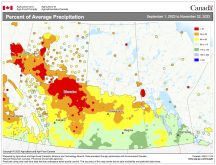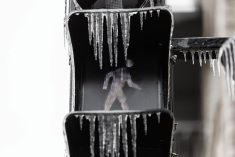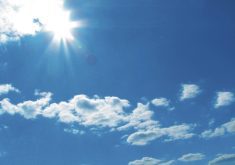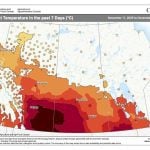Surprisingly, trying to find and pull out heat waves that have hit southern and central Manitoba over the years is fairly hard. The difficult part is trying to determine how to define a heat wave. Is it two, three, four, or more days in a row above 30 C, or should it be above 32 C? What if you choose three or more days in a row above 30 C as the criterion and you have a year that sees two days in a row above 30 C then a 29 C day then a couple more days over 30 C, another day in the high 20s then back above 30 C? To me that is a heat wave but according to the criterion, it wouldn’t count.
Read Also
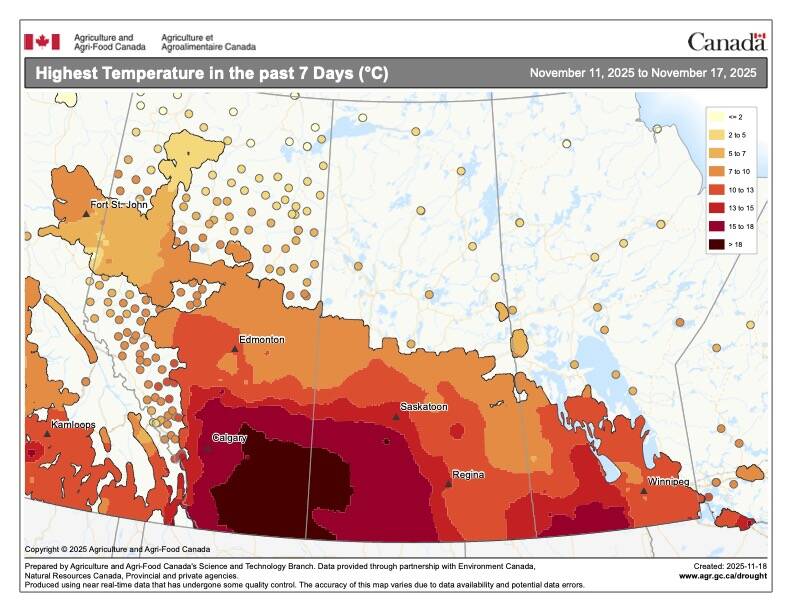
Farmer gift idea: How about a weather station?
The 2025 holiday season is looming, and a home weather station might make a great Christmas gift for farmers
When you have to look at more than 100 years of data you need to have some kind of criteria that will allow you to plow through the data fairly quickly and pick out years that have had some kind of heat wave. Trying to look through all the data manually becomes a very long and tedious process – I know; I’ve tried. Since coming up with a single criterion that would work well didn’t seem to be working out either, I had to come up with another way of picking out years that have seen significant heat waves.
The method I chose probably missed some small and possibly significant heat waves, but I decided that if a year had a large or long-lasting heat wave, then the mean or average temperatures for the summer would be abnormally high. With that in mind, I took another look at the data for Winnipeg (which goes back to 1873) and started looking for anomalously warm summers by looking at the average temperatures for June, July, and August combined.
The first thing I identified was which years had really warm/hot summers. Now, the value I used was the mean June to August temperature, which is the average temperature for the entire summer season. For Winnipeg, over the whole 138 years of data, the mean temperature over the three summer months was 18.2 C. Just for fun I double checked to see how all of the 138 values “fell” around this average, and as it should be, the distribution was nearly a perfect bell curve. That is, there was an equal number of years warmer and cooler than 18.2 C and the majority of the years (about 88 recorded values) fell within 1 of the average, with the number of years quickly dropping off the further you went away from the average.
For example, only five years recorded a mean summer temperature greater than 21 C and only two colder than 16 C.
MEAN ABOVE 20 C
From this, I decided that a mean summer temperature warmer than 20 C would be my threshold for a hot summer. Going back, here are our warmest summers: 1988, 1983, 1981, 1961, 1959, 1955, 1947, 1937, 1930, 1929, 1921, 1919, 1910.
Interestingly, there were no really hot summers in the late 1800s and while 1936 had a really hot July, the summer as a whole did not crack our list of the top hottest summers. Also, if you were born in the early ’60s you never would have experienced a really hot summer during your childhood as there were nones from 1962 all the way until 1981.
When I looked a little closer at these values I decided that cool or cold Junes would often skew the values a little bit, so I recrunched the numbers, only looking at July and August or what we in Manitoba typically refer to as our real summer months.
This time I bumped up the threshold to 21 C and ended up with four really, really hot years. 1930 had a hot summer with a mean temperature of 21.2 C, then came 1936 with a mean temperature of 21.7 C. We had to wait until 1955 for the next hot summer with a mean temperature of 21.5 C. Finally, the hottest summer of them all came during the early ’80s when back in 1983 the mean temperature for the months of July and August came in at a sweltering 22.3 C.
If I drop the July to August threshold down to 20 C then the number of hot summers jumps a fair bit. Here is a list of the hottest summers over the past 138 years, based on mean July and August temperatures. For these two main summer months the 1980s remain the hottest decade, with five years recording summer values greater than 20 C. By the way, it looks like the summer of 2010 will miss out, with a mean temperature expected to come in around 19.7 C.
———
YEAR
1878
1916
1920
1929
1930
1936
1937
1939
1943
1947
1949
1955
1957
1959
1960
1961
1963
1981
1983
1984
1988
1989
1991
2003
AVERAGE TEMP C
20.2
20.4
20.1
20.2
21.2
21.7
20.8
20.6
20.0
20.6
20.6
21.5
20.5
20.2
20.2
20.9
20.7
20.2
22.3
20.3
20.6
20.8
20.3
20.5



